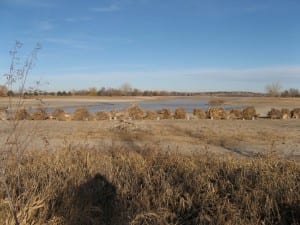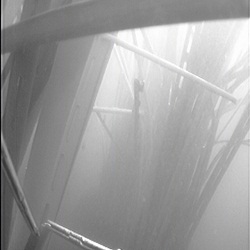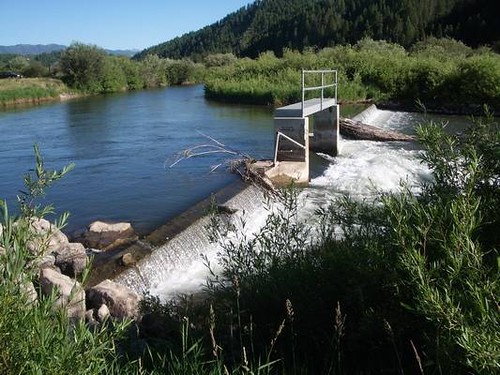If you want to drop a line into Southwest Pond near Greenspond this summer, you should know the rules have changed — dramatically. Dozens of unique habitat models at fishiding.com
- Topics :
- Fisheries and Oceans Canada , Indian Bay Ecosystem , Southwest Pond , New-Wes-Valley ,Greenspond
As of June 1 of this year, anglers will only be permitted to retain two fish, regardless of species, from the pond, and they’ll have to obtain tags from Fisheries and Oceans Canada in order to do so.
For the fishers who are interested in catch-and-release, the limit will be four per season.
For the most part, federal officials said the purpose of the new regulations is to protect the salmon population in the pond. That’s what they told a group of about two dozen people who attended a public meeting in Valleyfield last week.
The news didn’t go over terribly well with some of the people in attendance. Harry Winter is the town manager for the municipality of New-Wes-Valley. He said council put a pond management program in place in 2000, and he’s not pleased to see the federal government come in and suggest it’s not working and needs to be replaced.
“It’s not good enough … to say that the management plan that we’ve got is not working?” Mr. Winter said. “Here’s a case of something not working because the federal department is not doing what’s required to implement and take care of that management plan, and I suggest if (they) do you’ll have no concerns and no complaints about the stocks in Southwest Pond.”
Mr. Winter said prior to the establishment of the management plan more than a dozen years ago, anglers could take up to 24 fish a day from the pond under provincial regulations.
When council, along with the Indian Bay Ecosystem Corporation and the federal fisheries department, decided to put a plan in place, the new rules meant anglers had to apply by bag limits that restricted them to the retention of six fish per day, or two pounds plus one fish, whichever came first.
The new rules will limit fishers to just two fish per season, regardless of species. They will also be required to obtain tags from the federal department.
Mr. Winter said while the new rules, in and of themselves, are troubling to many residents who have fished regularly on that pond for generations, what bothers him, and some other people even more is what they perceive as a failure on the part of the federal government to adequately relay to them information about the changes in a timely fashion.
“What gets to me is this was all done without them telling us anything,” said Mr. Winter. “Yes, they are now telling us what the new rules are, but we didn’t even know they were coming. There was no consultation with council, or with residents, before the rules were set in stone.”
Back in the late 1990s, some folks in New-Wes-Valley knew there was something that had to be done about the declining numbers of fish in Southwest Pond.
Protecting resources
The body of water, located off the highway that takes travellers from the main drag that is Route 320 in the direction of Greenspond, has been used for fishing by area anglers, and tourists, for generations.
But around 15 years ago, voices raised in concern for the protection of the fish stocks, and in particular the salmon known to call the pond home, began suggesting some rules needed to be put in place.
Enter the municipal council of New-Wes-Valley. It drafted and then put in place a management plan for the pond that it hoped would protect the salmon population.
“Back then, we knew something had to be done,” said Mr. Winter. “We sat down and put together a plan we believed would ensure there would always be salmon in that pond. Now, the federal government is telling us our plan is not good enough.”
“Yes, there were regulations, but they were never followed.”– Ken Hoyles, Deputy Mayor, New-Wes-Valley
Also on hand for the meeting was New-Wes-Valley Deputy Mayor Ken Hoyles. He said the concerns being raised by most people in the area do not stem from the simple idea of stock management and restrictions on the number of fish that can be retained. It’s more about ensuring everyone has enough information about the new regulations, and that the rules are properly enforced.
“Let’s do this in the proper manner,” Mr. Hoyles said. “We need to have some discussions to ensure this is the proper way to go with this, and get the basic background information, and maybe instead of two tags and game over, we might be able to put a process in place where you would have a bag limit, because I think what we’ve done here is we’ve gone from nothing to drastic. We’ve gone from no regulations to you only use two tags to catch two fish.”
Even after the management plan was put in place in 2000 by the council of that day, it was never enforced, officials said.
“You could go up there one day, catch three fish, go up the next day, catch one fish, the next day you might catch two fish,” said Mr. Hoyles. “Yes, there were regulations, but they were never followed. They were never enforced.
“They need to be enforced.”
tsaunders@ganderbeacon.ca
Twitter: @Beacon1Reporter













